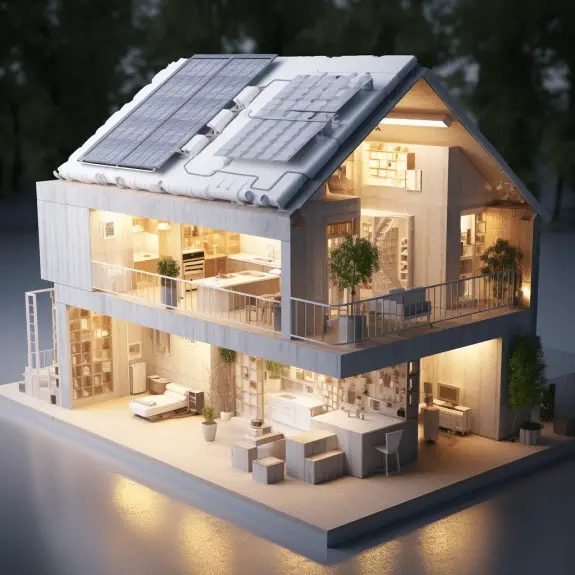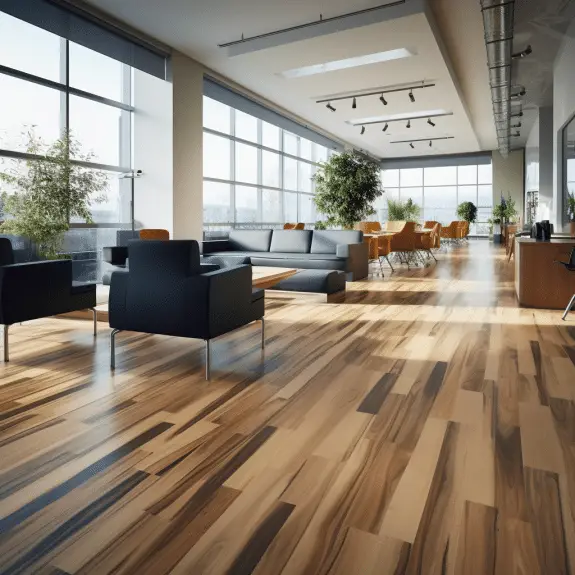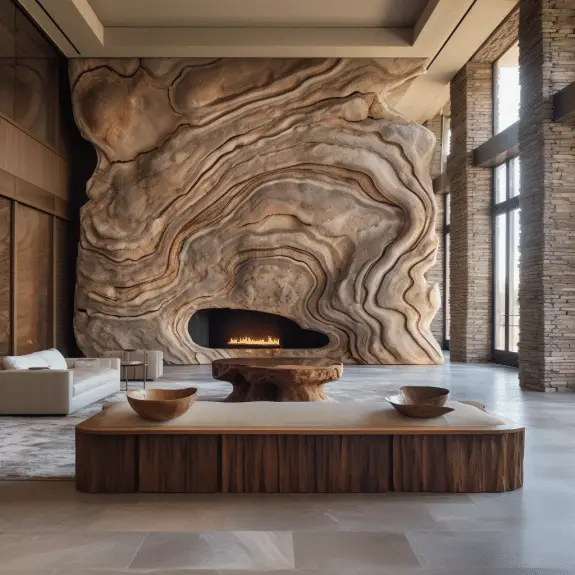US Construction Revolution: Modular Efficiency for Sustainability
Modular construction materials have the potential to revolutionize the building industry in the United States by offering increased efficiency, cost-effectiveness, and sustainability. With the use of prefabricated components and controlled manufacturing processes, these materials can significantly reduce construction time and costs. They also contribute to a more environmentally friendly approach to construction, with standardized designs and reduced waste.
Several companies, including Skender in Chicago, are already embracing modular construction to create smart and innovative buildings. By harnessing the advantages of modular construction, the industry can achieve higher building efficiency and a more sustainable future in the US.
Key Takeaways:
- Modular construction materials offer increased efficiency, cost-effectiveness, and sustainability in the building industry.
- Prefabricated components and controlled manufacturing processes reduce construction time and costs.
- Modular construction contributes to a more environmentally friendly approach with standardized designs and reduced waste.
- Skender in Chicago is one of the companies embracing modular construction to create smart and innovative buildings.
- The use of modular construction materials can lead to higher building efficiency and a more sustainable future in the US.
The Advantages of Modular Construction
Modular construction, inspired by the assembly line concept, offers numerous advantages that are revolutionizing the building industry. By constructing building components in a controlled environment, the process ensures superior quality and standardized design. This approach not only results in significant time and cost savings but also minimizes errors and improves overall efficiency.
The assembly line concept in modular construction allows for the simultaneous manufacturing of different components, leading to faster production and reduced construction time. The controlled environment ensures that each module is built to precise specifications, reducing the need for on-site adjustments and rework. This eliminates weather-related delays and minimizes labor costs, resulting in substantial time and cost savings.
Besides time and cost savings, modular construction also benefits from a standardized design approach. By using standardized components and manufacturing processes, builders can achieve consistent quality and minimize variability. This ensures that every module fits together seamlessly and contributes to a uniform, aesthetically pleasing final product.
Modular construction offers a controlled environment for building components, resulting in time and cost savings, improved quality control, and standardized design.
Overall, the advantages of modular construction, including the assembly line-inspired approach, time and cost savings, controlled environment, and standardized design, are revolutionizing the construction industry. By embracing this innovative construction method, builders can achieve increased efficiency, improved quality, and sustainable building practices.
| Advantages of Modular Construction |
|---|
| Time and cost savings |
| Improved quality control |
| Standardized design |
Skender’s Innovative Approach to Modular Construction
Skender, a Chicago-based company, is at the forefront of modular construction with its advanced manufacturing approach. They have unveiled a prototype of a smart apartment module, showcasing the potential of melding design, assembly, and construction. Skender launched its advanced manufacturing company, Skender Manufacturing, in 2018, aiming to make construction safer, faster, cheaper, and more technologically advanced and environmentally friendly. The company’s new manufacturing facility in Chicago will be able to turn incoming materials into finished building modules in as little as five days.
Skender’s innovative approach to modular construction sets them apart in the industry. By combining design, assembly, and construction processes, they have created a streamlined and efficient method of building. The prototype smart apartment module demonstrates their commitment to embracing technological advancements and pushing the boundaries of what is possible in the construction industry. This accelerated production process not only saves time but also reduces costs, benefiting both Skender and their clients. The facility operates with cutting-edge technology, ensuring precision and quality in every building module produced.
Table: Skender’s Advanced Manufacturing Facility Features
| Feature | Description |
|---|---|
| State-of-the-art Equipment | The facility is equipped with advanced machinery and technologies to streamline the manufacturing process. |
| Efficient Workflow | Skender has optimized their production flow to minimize downtime and maximize efficiency. |
| Sustainable Practices | The facility incorporates eco-friendly practices to minimize environmental impact. |
| Quality Control | Skender has implemented rigorous quality control measures to ensure the highest standards of construction. |
Skender’s modular construction method and Chicago manufacturing plant are making construction more efficient and sustainable. Skender produces high-quality building modules in a quarter of the time using cutting-edge technology and efficient processes. They lead the modular construction business by changing building design and construction.
The Benefits of Skender’s Modular Manufacturing Facility
Skender’s modular manufacturing plant improves productivity, quality, and building costs. Skender streamlines component shipment and installation by using standardized steel chassis for creating modules.
Instead of on-site construction, the facility uses fabrication, which streamlines and controls the process. This method prioritizes assembly over on-site fabrication, ensuring quality and reducing errors.
Skender’s modular manufacturing facility saves money by using a fabrication mindset. It reduces material waste and optimizes resource use, making construction more efficient. Skender’s modular manufacturing technology might cut building time by 50% and cost by 15%.
The Sustainable and Efficient Advantages of Modular Construction
Modular construction offers several sustainable and efficient advantages that make it an attractive choice for builders and developers looking to create environmentally friendly structures. One of the key benefits of modular construction is its ability to utilize energy-efficient materials and technologies. By building components in a controlled environment, the process can incorporate materials that have been specifically chosen for their energy-saving properties, reducing energy consumption and minimizing environmental impact.
In addition to energy efficiency, modular construction also excels in waste reduction. The standardized design and manufacturing processes employed in modular construction minimize waste and optimize resource utilization. Compared to traditional construction methods, where materials are often cut and shaped on-site, modular construction allows for precise measurements and prefabrication of components, resulting in significantly less material waste. This reduction in waste not only benefits the environment but also contributes to cost savings for builders.
Modular construction enables builders to utilize eco-friendly materials, further enhancing its sustainability. With increased awareness of environmental concerns, there is a growing demand for construction materials that have minimal impact on the ecosystem. Modular construction allows for the use of eco-friendly materials such as recycled steel, sustainably sourced wood, and low-VOC (volatile organic compound) paints and adhesives. By choosing these materials, builders can create structures that are not only energy-efficient and waste-free but also promote a healthier and greener living environment.
With its sustainable and efficient advantages, modular construction is gaining popularity in the construction industry. Builders and developers are recognizing the environmental benefits of this construction method and are embracing it to create structures that are both eco-friendly and cost-effective. As technology continues to advance and more innovative materials and processes are developed, the future of modular construction looks promising, paving the way for even greener and more sustainable buildings.
| Advantages of Modular Construction | Sustainable Benefits | Efficiency Benefits |
|---|---|---|
| Reduced construction waste | Utilizes eco-friendly materials | Precise measurements and components |
| Energy-efficient materials and technologies | Minimizes environmental impact | Optimizes resource utilization |
| Standardized design and manufacturing processes | Cost savings through waste reduction | Reduces material waste |
The Future of Modular Construction Materials
Technological advancements are revolutionizing modular construction materials, opening up exciting possibilities for the future. One key area of development is the emergence of self-healing materials. These materials have the ability to repair themselves, improving the durability and lifespan of buildings while reducing maintenance costs. By incorporating self-healing materials into modular construction, we can create structures that are more resilient and require less upkeep over time.
Renewable energy integration is another crucial aspect of the future of modular construction materials. With the increasing focus on sustainability, modular buildings have the potential to become self-sustaining power generators. By incorporating solar panels, kinetic systems, and energy-harvesting facades, these buildings can generate their own energy, reducing reliance on traditional power sources and decreasing their environmental impact.
“The use of self-healing materials in modular construction can significantly improve the longevity and durability of buildings, reducing maintenance costs and increasing sustainability.” – Industry Expert
The efficiency, sustainability, and resilience of modular construction will be further improved by these technological developments in self-healing materials and the incorporation of renewable energy sources. As long as the construction sector keeps adopting these cutting-edge developments, modular structures will eventually be not just more affordable and quicker to construct, but also more technologically sophisticated and ecologically benign.
| Technological Advancement | Potential Benefits |
|---|---|
| Self-healing materials | Improved durability, reduced maintenance costs |
| Renewable energy integration | Sustainable and self-sustaining buildings |
| Advanced automation and robotics | Enhanced efficiency and speed in construction |
Technological Advancements in Modular Construction Materials
The future of modular construction materials holds immense potential for technological advancements. With ongoing research and development, we can anticipate the emergence of even more innovative materials and techniques that will reshape the construction industry.
As technology continues to advance, the benefits of modular construction materials will become even more pronounced. From self-healing materials to renewable energy integration, these advancements will drive the industry towards a more sustainable and efficient future.
The Role of Building Construction Technology in the Industry
Technology is revolutionizing building construction, providing creativity, efficiency, and sustainability. Modern advances like digital transformation and smart construction are changing building design and construction.
Digital technology use is one of the industry’s most innovative trends. Construction companies are using AI, IoT, and data analytics to automate and streamline many tasks. AI-powered construction management solutions increase resource allocation, safety, and predictive analytics, improving project performance and lowering costs. Building construction technology is also affecting smart construction.
| Innovative Trends | Benefits |
|---|---|
| Digital transformation | Streamlines processes, improves resource allocation, enhances safety measures and predictive analytics |
| Smart construction | Enhances energy efficiency, occupant comfort, and sustainability through the integration of advanced technologies |
Building construction technology is driving the industry towards a future where buildings are not just structures, but intelligent systems that optimize energy consumption, improve safety, and enhance the overall quality of life for occupants. Through continuous technological advancements and a focus on sustainability, the construction industry is poised to create buildings that are not only visually stunning but also efficient and environmentally friendly.
Embracing the Future
The future is bright for the construction industry as long as it continues to adopt cutting-edge technologies and creative ideas. Future buildings will become self-sufficient power plants by utilizing solar energy, kinetic systems, and energy-harvesting facades to reduce their environmental impact. This is due to the growing emphasis on sustainability and renewable energy sources.
Productivity and efficiency will be significantly increased in the construction industry by incorporating automation and robotics. Robots can carry out hazardous and repetitive jobs, lowering the possibility of accidents and boosting productivity overall. Construction workers will be able to see and interact with digital models in real-time thanks to augmented reality (AR), which will increase accuracy and reduce mistakes.
In general, the industry’s use of building construction technology is propelling it toward a future that is effective, sustainable,
The Future Outlook for Building Construction Technology
As the construction industry evolves, technology will shape building construction technology. These developments, from AI-powered construction management to renewable energy integration, will transform building planning, construction, and maintenance.
Technology: Rapid construction technology advances are driving innovation and efficiency. AI in construction management can optimize resource allocation, improve safety, and predict and resolve issues. AI will speed up and lower the cost of construction projects. Renewable Energy: Future building construction technology will focus on renewable energy. Structures can self-sustain.
| Technological Advancements | Renewable Energy | AI-powered Construction Management |
|---|---|---|
| Optimized resource allocation | Self-sustaining power generators | Real-time insights and data analysis |
| Enhanced safety measures | Reduced reliance on traditional energy sources | Improved decision-making |
| Predictive analytics for issue anticipation | Increased sustainability and cost savings | Automation of repetitive tasks |
As the construction industry embraces these technological advancements, we can expect buildings to be smarter, more sustainable, and more efficient. The integration of AI and renewable energy will redefine the way buildings are designed, constructed, and operated, leading to a more sustainable and environmentally friendly future.
The Future of Construction: Efficiency and Sustainability Through Innovative Trends

The construction industry is undergoing a remarkable transformation, driven by the integration of modular construction materials and innovative building construction technology. These advancements are revolutionizing the way buildings are designed, constructed, and operated, promising increased efficiency and sustainability.
Modular construction, with its standardized designs and reduced waste, offers significant advantages for the industry. It allows for streamlined processes, faster project completion, and improved quality control. By embracing modular construction materials, builders can achieve cost savings, minimize environmental impact, and deliver aesthetically appealing structures.
However, it is not just modular construction that is shaping the industry’s future. Innovative trends in building construction technology, such as artificial intelligence (AI), robotics, and renewable energy integration, are making construction processes smarter and more sustainable. These technologies optimize resource allocation, enhance safety measures, and improve predictive analytics, resulting in more efficient and resilient buildings.
We can expect efficiency, sustainability, and aesthetic excellence in the construction industry as it adopts these new trends. Combining modular construction materials with cutting-edge building construction technology is enabling smarter, greener, and more profitable construction projects.
Source Links
- https://rejournals.com/with-unveiling-of-modular-prototype-skender-hints-at-future-of-assembled-buildings/
- https://real-estate-crunch.com/homebuilding-revolution-unveiling-the-modular-housing-era/
- https://medium.com/@ctfksa/unveiling-the-future-researching-the-latest-trends-in-building-construction-technology-ctf-ksa-46946fa2d27a








